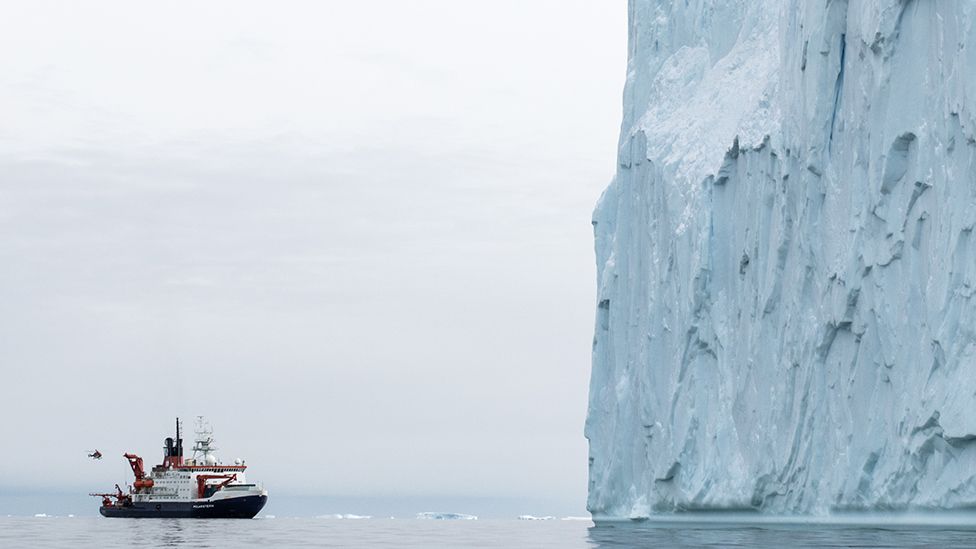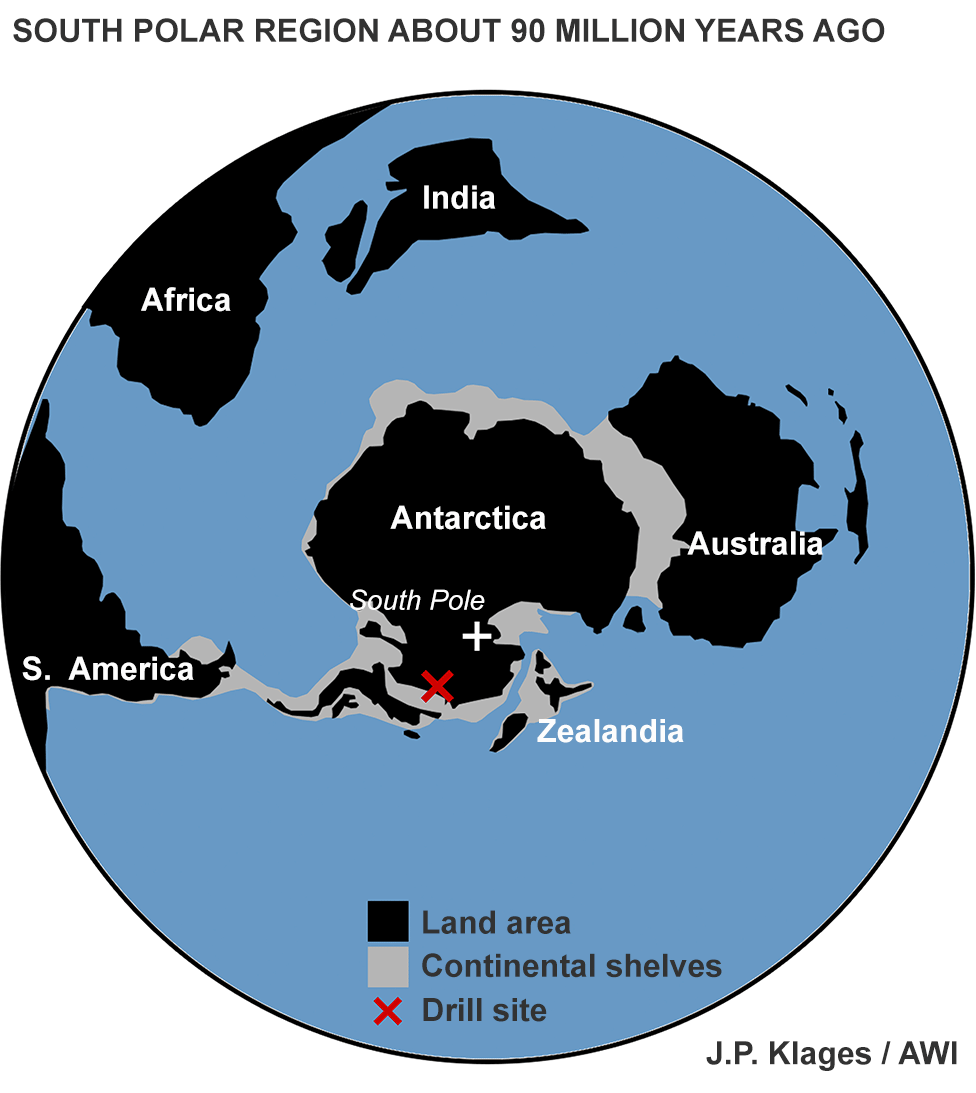Scientists drilling off the coast of West Antarctica have found the fossil remains of forests that grew in the region 90 million years ago - in the time of the dinosaurs.
Their analysis of the material indicates the continent back then would have been as warm as parts of Europe are today but that global sea levels would have been over 100m higher than at present.
The research, led from the Alfred Wegener Institute (AWI) in Germany, is published in the journal Nature.
It's emerged from an expedition in 2017 to recover marine sediments in Pine Island Bay.
AWI and its partners, including the British Antarctic Survey (BAS), used a novel cassette drill-mechanism called MeBo to extract core material some 30m under the seafloor.
When the team examined the sediments in the lab, it found traces of ancient soils and pollen and even tree roots.
- Warning from 'Antarctica's last forests'
- Deepest point on land found in Antarctica
- Journey to the 'doomsday glacier'

The interpretation is that this sector of West Antarctica, in the geological period known as the Cretaceous, featured temperate rainforest and swamp conditions - the kind of vegetation you will find on New Zealand's South Island today.
"We have a really nice X-ray movie through the sediment core," said AWI's Prof Karsten Gohl, who spearheaded the expedition on Germany's Research Vessel Polarstern.
"It's like we've drilled into a modern swamp environment and you're seeing the living root system, small plant particles and pollen - but this is all preserved from 90 million years ago. It's amazing."

The fossil root material shows up (green) in this 3D X-ray movie of a sediment core
Modelling work suggests average annual temperatures in this Cretaceous environment would have been in the mid-teens Celsius; summer averages would have been in the 20s.
But the vegetation must have been pretty special because, being so far south, it would have had to endure three to four months of polar darkness.

Dr Johann Klages: "There would have been no large ice masses on Antarctica"
The Nature paper's first author is AWI's Dr Johann Klages. "Probably these plants, they had a much more effective way of shutting down for a much longer amount of time and then come back successfully," he speculated.
"That was quite an interesting adaptation, which is not present right now on the planet, but which can evolve," he told BBC News.

Seeing the White Continent as we do today with its kilometres-thick ice covering, it's a challenge to the imagination to think of such productive conditions. But BAS director, Prof Jane Francis, says there have been several periods in Earth history when Antarctica's great glaciers were absent.
This study, she says, represents the first evidence for Cretaceous forests so close to the South Pole - just 900km away, at what would have been about 81-82 degrees South latitude.
"And, yes, there probably were dinosaurs in the forests," she explained. "If you go to the tip of the Antarctic Peninsula, you'll find a whole range of fossils - things like hadrosaurs and sauropods, and primitive bird-like dinosaurs. The whole range of dinosaurs that lived in the rest of the world managed to get down to Antarctica during the Cretaceous."


To sustain the warmth these animals and the forests enjoyed, greenhouse gases in the atmosphere - like carbon dioxide - must have been three or four times current levels. If today the concentration of CO2 in the atmosphere is just above 400 parts per million (ppm), back then the figure was certainly above 1,000ppm and maybe as high as 1,600ppm.
BAS co-author Dr Robert Larter commented: "The world was a different place in other ways that would have contributed to the climate differences at this time. In particular, the positions of continents and the patterns of ocean currents were different.
"However, there is no doubt that the biggest factor leading to such a warm climate was the extremely high levels of CO2 in the atmosphere at that time. It is worth noting that if the current rate of CO2 increase continues (44ppm increase over past 20 years), we will reach a CO2 level greater than 1,000ppm in less than 300 years."

The MeBo seafloor drilling system


- "Meeresboden-Bohrgerät" is German for "seafloor drill rig"
- It's lowered to the seabed with a specially designed cable
- This also delivers power, and carries commands and video
- An operator drives MeBo remotely from the deployment ship
- System has a magazine of pipes to lengthen the drill string
- Mebo can penetrate mud and rock to a depth of up to 80m











0 comments:
Post a Comment